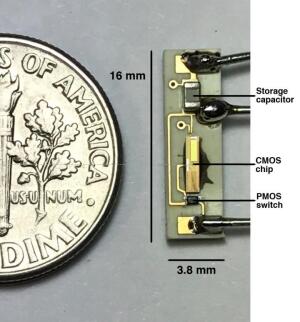by
Lauren Dubinsky, Senior Reporter | June 09, 2017

The internal components of
the new pacemaker
A new pacemaker, created by researchers at Rice University and the Texas Heart Institute, is set to make a splash in the cardiac community.
The device is wireless, doesn't require a battery and can be implanted directly into the patient's heart. It's powered by radio frequency radiation that's transmitted via an external battery pack.
Approximately 200,000 pacemakers are implanted in the U.S. in bradycardiac patients each year, according to the American College of Cardiology.



Ad Statistics
Times Displayed: 120730
Times Visited: 6941 MIT labs, experts in Multi-Vendor component level repair of: MRI Coils, RF amplifiers, Gradient Amplifiers Contrast Media Injectors. System repairs, sub-assembly repairs, component level repairs, refurbish/calibrate. info@mitlabsusa.com/+1 (305) 470-8013
Traditional pacemakers include a subcutaneous pulse generator that's placed in the chest wall and transvenous pacing leads attached to myocardial tissue. But the downside is that the leads are associated with complications such as bleeding and infection.
Leadless pacemakers have recently been introduced to the market to avoid those complications, but they are unable to provide dual-chamber or biventricular pacing.
At the center of the new pacemaker is a less than four millimeter wide microchip that can pace multiple points inside or outside of the heart. The chip is composed of the receiving antenna, an AC-to-DC rectifier, power management unit and pacing activation signal.
The frequency of the pacing signals can be adjusted by increasing or decreasing the power transmitted to the receiving antenna. It stores power until it reaches a predetermined threshold and then releases the electrical charge to the heart and begins to fill again.
The research team has tested the pacemaker in a pig and found that it can tune the animal's heart rate from 100 to 172 beats per minute. A paper discussing the device will be released at the IEEE's International Microwave Symposium in Honolulu this week.

